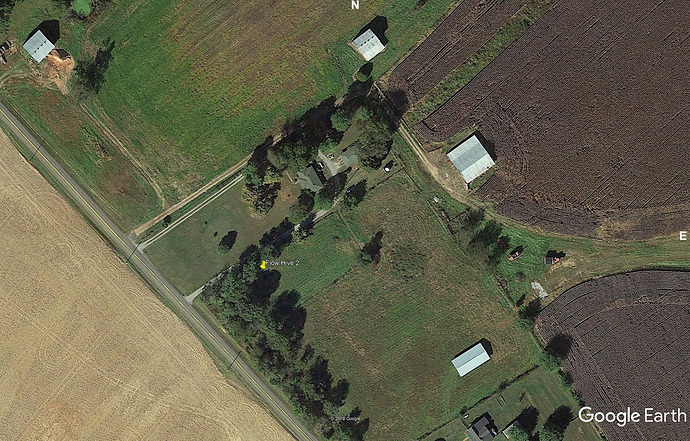Hello from Western Kentucky! Long time listener, first-time caller. Coming from the Bluegrass State, there are two things I’ve never owned. A prize-winning stallion in the Kentucky Derby, and a beehive. Got stepped on by a horse once when I was young. Grew up with an innate fear of stinging insects. On the latter… I can count on about three toes the number of bee stings I’ve had in my life. In the past few years, as my interest in mountain biking increased, I started coming face to face with all manner of stinging wasps (Giant European Hornets, Bald-Faced Hornets, and Yellowjackets specifically). And a few wild bee hives. I began to develop a great respect and interest in them, and have now become an amateur entomologist of sorts. I do not fear them now and go so far as to try and protect even Yellowjackets, asshats though they are. But, I bloviate.
For several years I have been thinking about getting into apiculture. I have a close cousin who is deeply invested in it. I live in a prime locale for this, on about three acres of mainly farmland with wooded sections. To this end, I recently purchased a Flow Hive 2. It ships August 2018. So now I feel like the proverbial dog chasing a car. I’ve caught it. Now what? I am just starting to immerse myself with videos and text about beekeeping. I have a special needs son I take care of in my retirement, so getting involved in a local club would be difficult for me at best. I do have a nice bee suit lined up through Honeyflow, and other accouterments.
But I have some basic questions.
Hive placement: I went from thinking I could park this hive right next to my screened in porch (naive I know) to a cozy place in a grassy field about 160 feet from my front door. It will face almost due South-East. It will get morning sun until probably 3~5 PM year-round, then be shaded from then till sunset for most of the year (depending on the deciduous tree leaf mass). Great protection from our winds out of the North-West. There is a natural pond in a wooded area 50 feet away. Honeysuckle abounds just behind the next. The only disturbance to them would be my driveway (facing away from the hive opening) about 25 feet from the hive. It would hardly be visible because of the honeysuckle. Does this sound like good placement?
Bees between now and August: I am under the assumption that getting the Flow Hive 2 in August, building it, placing it, learning it, will give me little if any time to actually introduce bees to it before the onset of Fall. We don’t generally get freezing temperatures until November (fleeting; I’m usually still cutting grass up until late November), and it can climb well into the mid to upper 60F’s into December. So what do I do? I’m thinking wait until Spring of 2019 to dive into the Flow Hive.
Jump in now: Then I thought about visiting a local bee company (by staggering coincidence there is one in the next big town up the Interstate) and buying a hive. Just a standard Langstroth. Something to learn on and get started this Spring, 2018. As in next week. And this is a really dumb question. Can hives just be left to their own devices? Could I purchase a “starter hive” and a nuk of bees (Langstroth), bring the two together and see what happens? Monitor them, check on their health, learn from them. And, then (if I did this) can these bees, assuming they survive, then be introduced to the Flow Hive next year? Or does one simply get a nuk for the second hive?
That’s enough banter for now. Sorry to ask so many questions, the answers to which are no doubt here and there. But I’ve been sorting through so many pages about all this, feeling a little overwhelmed. Here is a picture of my property and where I plan on placing the Flow Hive 2
Thanks, y’all! Chris
